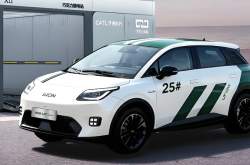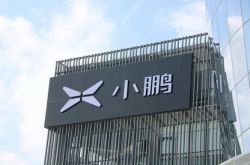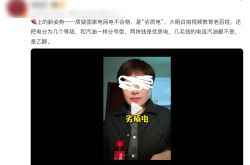Independent Brands Surpass 60% Market Share, Breaking Joint Venture Dominance
![]() 01/13 2025
01/13 2025
![]() 389
389
China's automotive industry has achieved a pivotal milestone in its quest for market leadership.
According to the latest data released by the China Passenger Car Association, domestic passenger vehicle retail sales totaled 22.894 million units in 2024, marking a 5.5% year-on-year increase. BYD emerged victorious, clinching both monthly and annual sales crowns, with independent brands capturing over 65% of the wholesale market and exceeding 60% of the retail market.
From a sales perspective, independent brands now lead the Chinese automotive market. Numerous new energy automakers or brands reported annual sales growth in 2024, with most automotive groups selling over 2 million vehicles throughout the year.
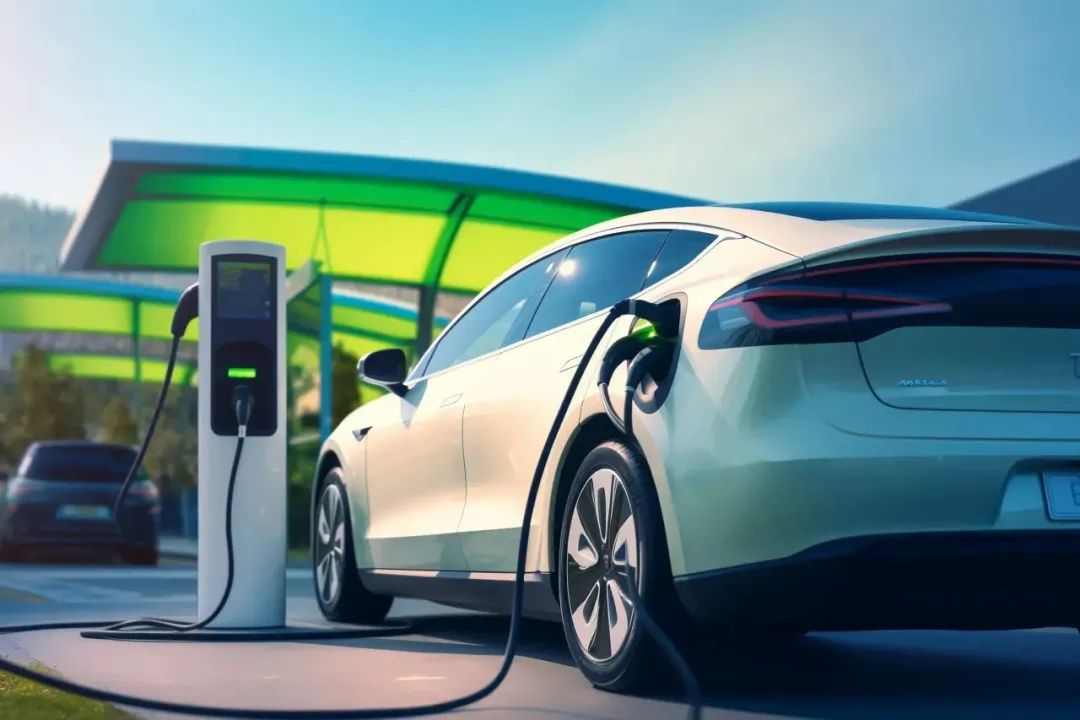
In contrast, FAW-Toyota claimed to be the "only mainstream joint venture automaker with positive growth for two consecutive years." Notably, FAW-Toyota did not disclose specific figures but highlighted that its annual sales surpassed 800,000 units in 2024, an increase of 181 units compared to 2023.
Moreover, in the top 10 sales rankings, FAW-Volkswagen and SAIC-Volkswagen slipped to third and sixth positions, respectively, while Tesla debuted in the top 10.
One Superpower, Multiple Strong Players
In 2024, BYD set a new sales record with 4.2721 million units, securing the top spot in both the Chinese automotive market and the global new energy vehicle market.
Despite the perception that last year's 3 million sales would be a bottleneck, BYD maintained a high growth rate of 41.1% despite its substantial size.
Specifically, BYD sold 1.765 million pure electric EV models in 2024, accounting for 41.5% of total sales, while plug-in hybrid DM models sold 2.485 million units, accounting for 58.5%. Objectively, plug-in hybrid passenger vehicles emerged as the primary driver of BYD's sales growth.
At the beginning of 2024, BYD pioneered the "electricity cheaper than oil" strategy, igniting a "price war" in the market. By enhancing configurations and reducing prices, BYD engaged in a battle for pricing power and market influence. While BYD's high sales volumes are often attributed to "price wars" and "internal competition," sustaining and winning such wars poses a significant challenge for any company.
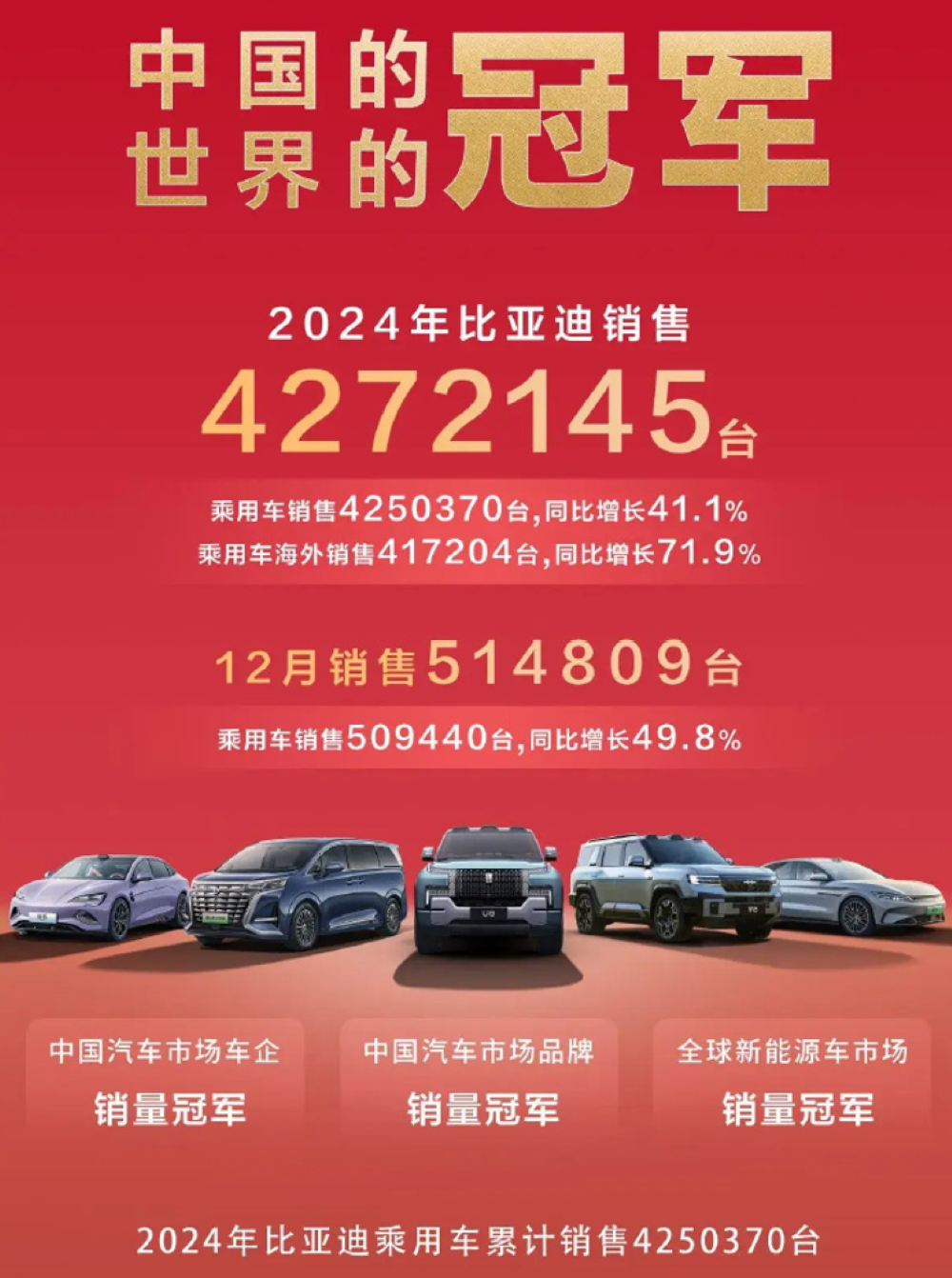
In 2019, BYD's annual sales volume was a mere 450,000 units. Riding the wave of new energy adoption, BYD achieved nearly tenfold sales growth in just five years, surpassing Nissan and Honda consecutively to rank as the world's seventh-largest automaker.
Beyond the price war, BYD has much to learn regarding "how to reverse brand image and capture users' minds."
"In 2025, while new energy vehicles will present significant opportunities, market competition will also intensify, entering a decisive battle and elimination round," BYD assesses the automotive market. It is foreseeable that 2025 will not mark the end of price wars. Current subsidy policies and new year promotions reflect automakers' unease amidst fierce competition.
While many automaker leaders, excluding BYD, exhibit various forms of "anti-internal competition," they still benefit from an internally competitive environment.
Yin Tongyue's statement, "Chery will not be polite in 2024," set the tone for Chery Group's journey towards high-end models.
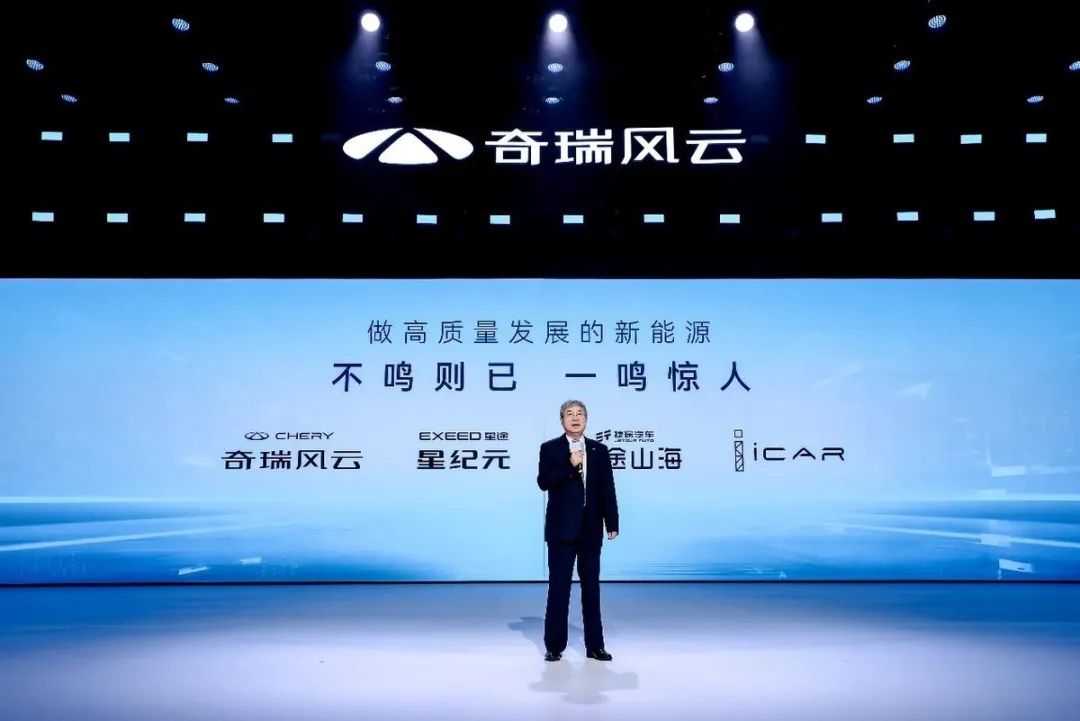
Throughout 2024, Chery Group delivered 2,603,916 vehicles, a 38.4% year-on-year increase, achieving four historical breakthroughs in annual sales, annual revenue, annual exports, and annual sales of new energy vehicles. It is the only automaker in the industry to achieve comprehensive growth across the "four tracks" of new energy, fuel vehicles, overseas exports, and the domestic market.
Chery also demonstrated robust growth in the new energy sector, with total sales of 583,569 units, a 232.7% year-on-year increase. Simultaneously, overseas exports reached 1,144,588 units, ranking first among Chinese brand passenger vehicle exports for 22 consecutive years and accounting for about 44% of the group's overall sales.
On the evening of January 11, Chery announced its 2025 sales target, stating that the group's sales growth rate would exceed the industry average by 10-20 percentage points. Based on this plan, Chery's conservative sales volume for next year will reach 3 million units.
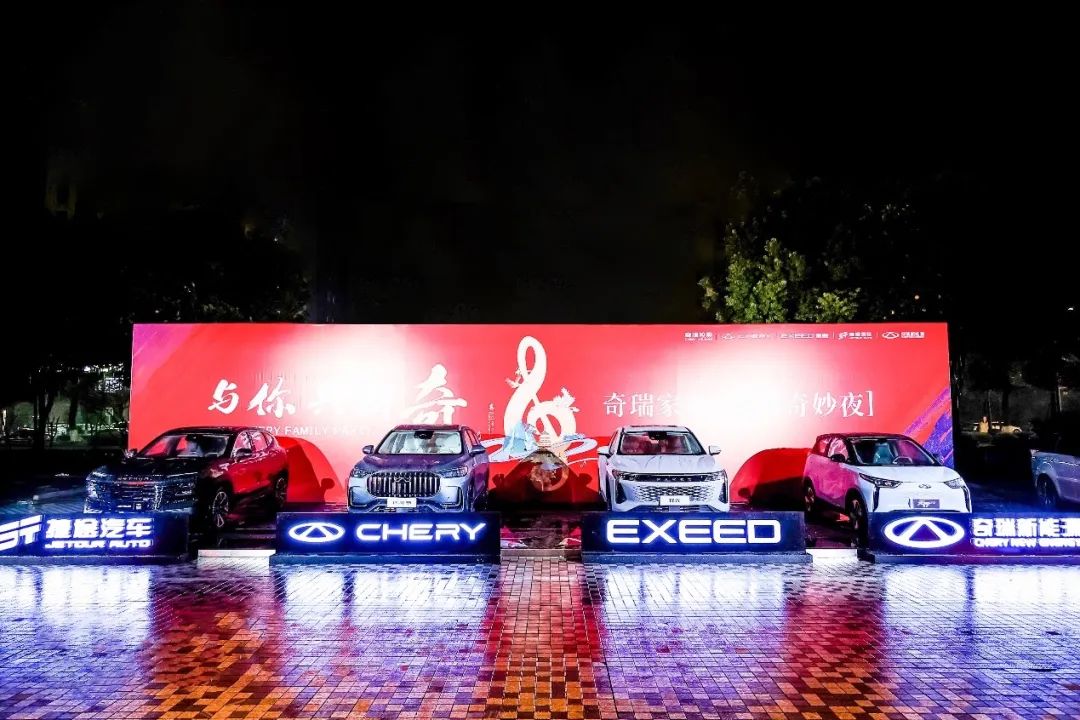
Changan Automobile also aims to exceed 3 million sales. In 2024, Changan Automobile achieved its best sales data in nearly seven years with over 2.68 million units sold. Independent brands continued to lead sales, with annual sales exceeding 2.23 million units, while new energy sales surpassed 730,000 units, a year-on-year increase of over 50%.
Its three major new energy brands, Changan Qiyuan, Deep Blue, and Avita, all performed well. Deep Blue Automobile, in particular, sold over 240,000 units throughout the year, surpassing XPeng and NIO and ranking among the top new energy brands.
Based on its 2024 performance, Changan Automobile has set 2025 targets of 3 million total sales, 300 billion yuan in revenue, 1 million new energy sales, and 1 million overseas sales, with plans to launch over 70 new products.
Additionally, Geely Automobile surpassed 2 million sales in 2024, with a total sales volume of 2,176,567 units, a year-on-year increase of over 32%, surpassing its annual sales target and setting a new record high.
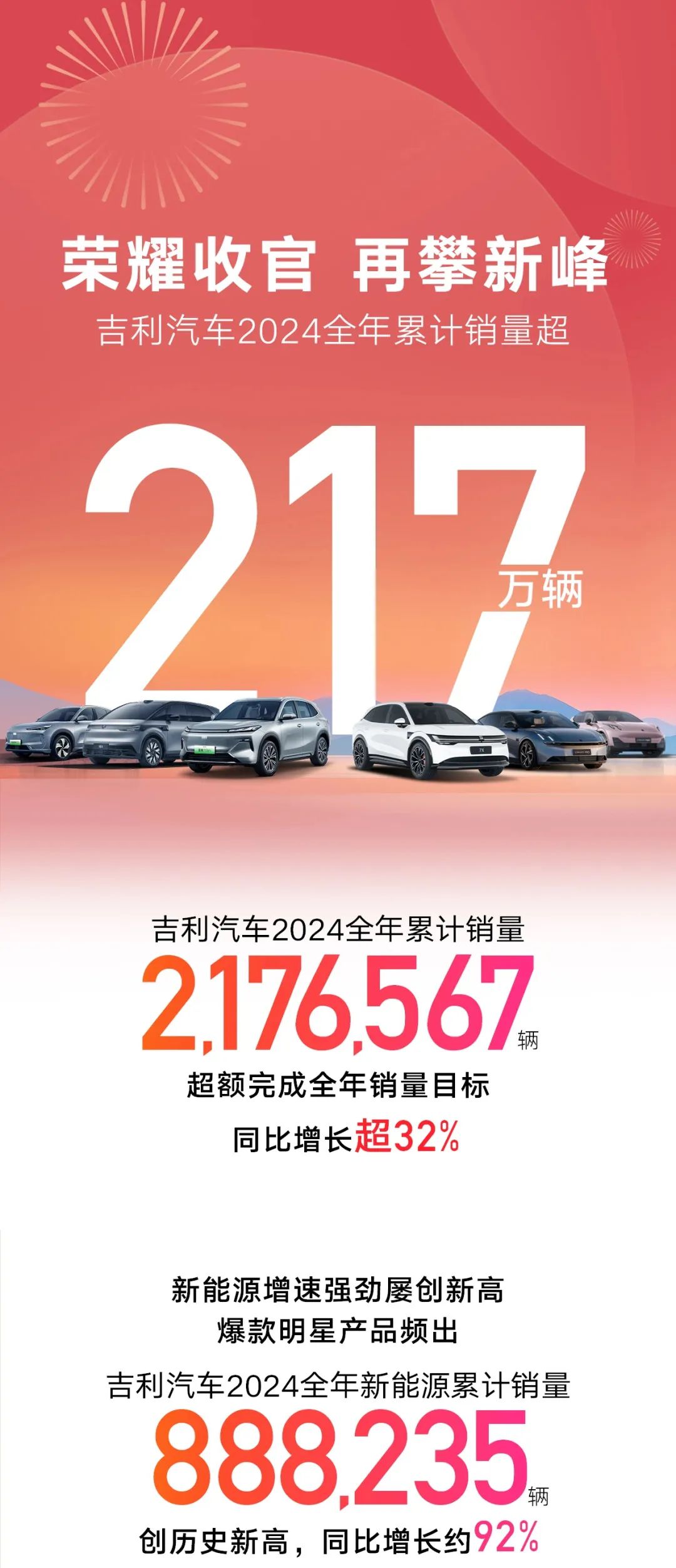
Geely's record sales were driven by the comprehensive rise of its new energy strategy. Geely Galaxy achieved a total sales volume of 494,440 units, a year-on-year increase of about 80%. Zeekr delivered 222,123 units, a year-on-year increase of 87%, while Lynk & Co.'s cumulative sales reached 285,441 units, a year-on-year increase of about 30%. Notably, Lynk & Co.'s new energy sales totaled 167,848 units, a year-on-year increase of over 163%, accounting for about 59% of total sales.
Geely has set its 2025 sales target at 2.71 million units, including 1.5 million new energy vehicles. Unlike other companies with vague sales targets, Geely's plans are precise, down to the figure of 2.71 million units, suggesting clear task divisions within each brand. This translates to a year-on-year growth rate of 25% in 2025.
Taking Plug-in Hybrids Overseas
While major automakers celebrate victories, the domestic passenger vehicle market is transitioning from incremental to stock growth. Rapidly expanding independent brands will inevitably squeeze the market share of joint venture brands and other foreign enterprises, underscoring the importance of exploring new market spaces.
In 2024, BYD's first wholly-owned overseas plant in Thailand and its joint venture plant in Uzbekistan commenced official production. From expanding market and sales cooperation to commissioning overseas plants, overseas markets will undoubtedly be the primary source of BYD's sales growth in 2025.

Wang Chuanfu has publicly stated that BYD's overseas sales will exceed 1 million units in 2025.
Recently, Dongfeng Motor Group announced its 2025 sales target of returning to the 3 million unit threshold and challenging 3.2 million units. Overseas exports are also expected to reach 500,000 units.
Changan's 2025 overseas sales target is similarly ambitious at 1 million units. "To achieve this goal, Changan Automobile plans to launch 13 new energy vehicle products, such as Avita 06, Deep Blue S09, and Changan Qiyuan C789, in 2025. It will deeply deploy in regional markets like Southeast Asia, Central and South America, and the Middle East and Africa, introducing 8 products and expecting the market share to rise to 9.4%," said Zhu Huarong, Chairman of Changan Automobile. By 2030, Changan's overseas sales proportion will reach 30%.
New forces are also actively expanding overseas. Since entering European markets in September 2024, NIO has established over 400 sales outlets in 13 countries and plans to expand to 500 by the end of 2025. NIO aims to launch multiple new models overseas in the next three years.
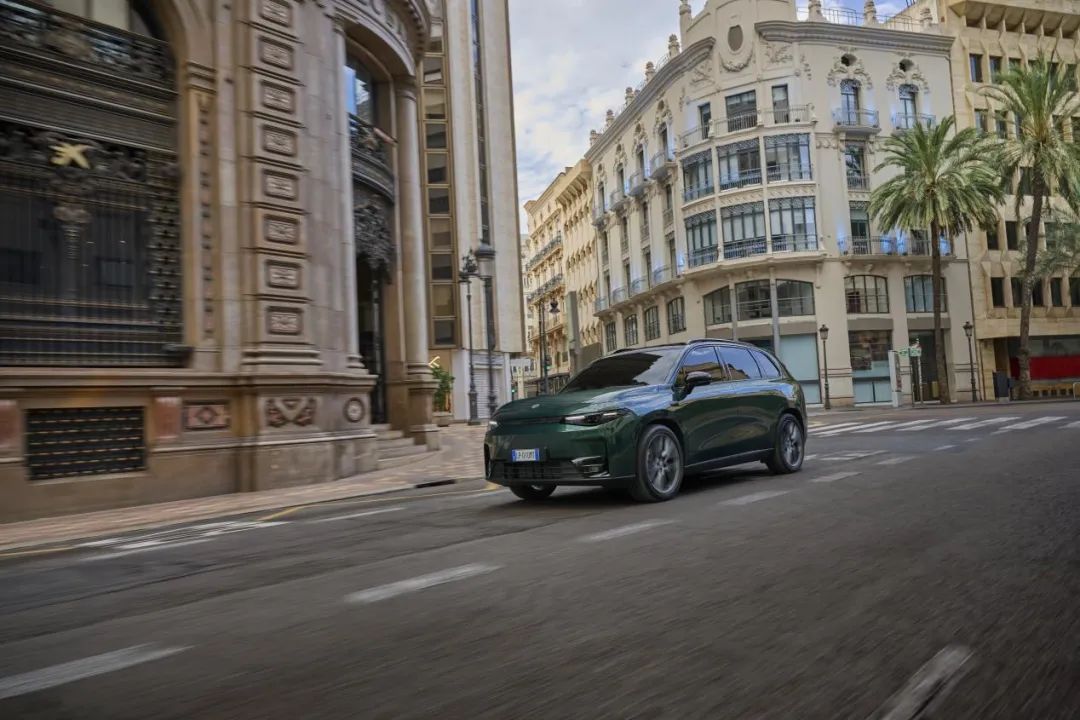
At the end of 2024, Li Auto established a dedicated overseas department, planning to establish an after-sales service network in the Middle East markets of the United Arab Emirates and Saudi Arabia. It will start delivering Li L9 and L7 models in the fourth quarter, breaking Li Xiang's previous promise of "not developing overseas markets before 2025".
Currently, overseas markets are predominantly dominated by traditional automotive giants from Japan, Europe, and the United States. Choosing the right products to launch in these markets is crucial.
Public data shows that sales in China's hybrid vehicle market increased tenfold from 2020 to 2023. By 2024, domestic plug-in hybrid models had grown by over 85% year-on-year, accounting for more than 40% of the new energy vehicle market. The sales gap between the two power types is rapidly narrowing, with plug-in hybrids and extended-range vehicles becoming key drivers of the new energy vehicle market's continuous growth.
Zhang Yongwei, Vice Chairman and Secretary-General of the China Electric Vehicle Hundred People Forum, believes that plug-in hybrids and extended-range vehicles will be rapidly developing areas in the new energy vehicle market in 2025. The proportion of these two types of vehicles in the new energy vehicle market will approach 50%.
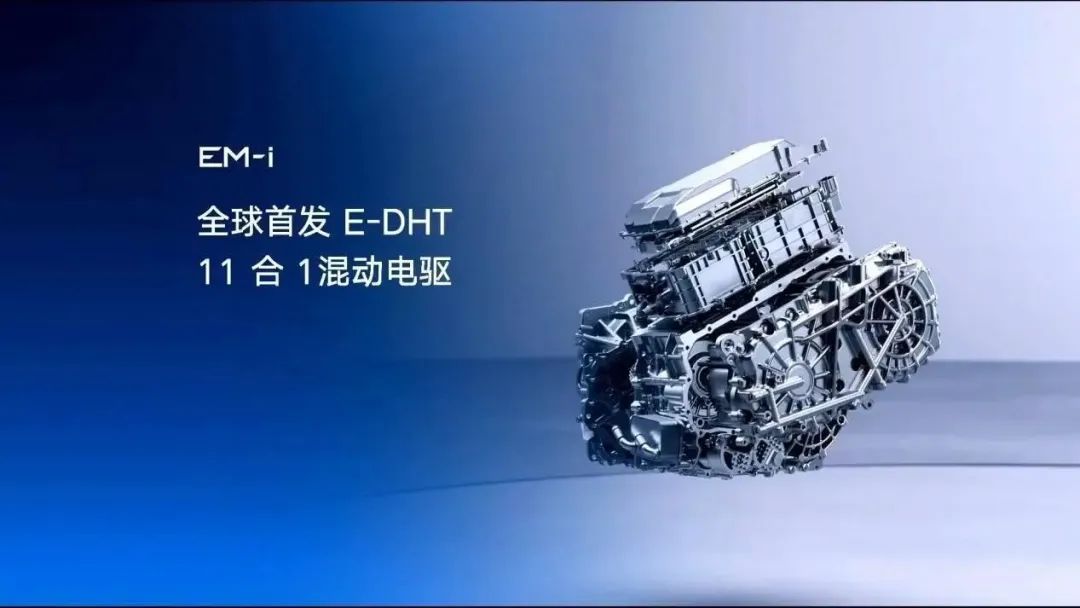
While China's automotive industry's lane change and overtaking started with pure electric vehicles, it was ultimately achieved through plug-in hybrids. BYD's DM-i technology, Geely Automobile's Leishen Zhiqing Hi·X hybrid system, Chery Automobile's Kunpeng DHT hybrid system, etc., are all crucial supports for independent brands' significant growth.
Even after new forces like Li Auto and Wenjie opened the market with extended-range models, XPeng, Zeekr, and Avita have also announced the launch of hybrid models, aiming to expand sales through both pure electric and hybrid power layouts.
In overseas markets where charging infrastructure is underdeveloped, the advantages of plug-in hybrid models become evident. Products born from China's fierce competition will undoubtedly make a significant impact when introduced overseas.
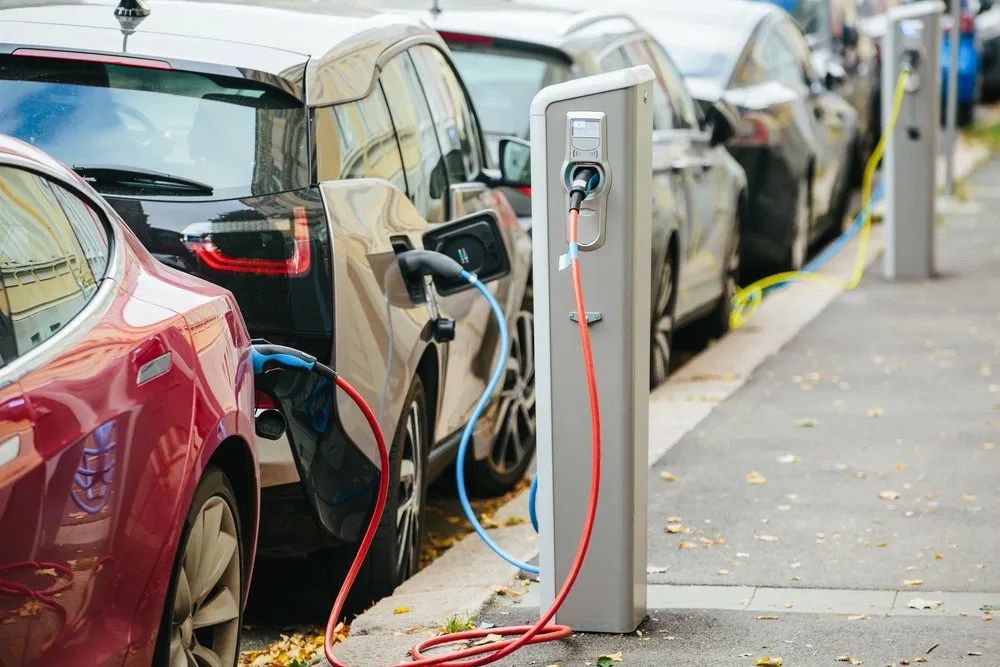
In 2024, Nezha teetered on the brink of bankruptcy in China but survived due to its popularity overseas, with a primary focus on the Southeast Asian market. It is foreseeable that in 2025, going overseas will gradually become a new "internal competition battlefield" for independent brands, complementing price wars. For some marginal brands, overseas markets even offer a viable refuge.

